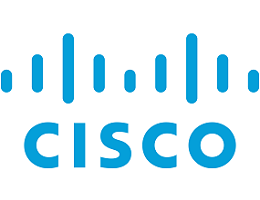Product Details
The Cisco UCS C420 M3 is part of the Cisco UCS solution, which combines rack and blade servers with networking and storage access into a single unified system. Centrally configured through unified, model-based management, Cisco UCS simplifies and accelerates deployment of enterprise-class applications running in bare-metal, virtualized, and cloud-computing environments.
The Cisco UCS C420 M3 combines the advantages of 4-socket computing with the cost-effective Intel Xeon processor E5-4600 product family for demanding virtualization, database, and high-end high-performance computing (HPC) workloads. The dense and expandable Cisco UCS C420 M3 is a balanced, high-performance platform that complements the Cisco UCS Rack Server portfolio.
The 2RU Cisco UCS C420 M3 supports 48 DIMM slots, 16 disk drives, seven PCIe expansion slots, and four 1 Gigabit Ethernet LAN-on-motherboard (LOM) ports. It uses unique Cisco UCS and virtual interface card (VIC) technology and delivers one-wire participation in Cisco UCS domains.
Summary
The Cisco UCS C420 M3 Rack Server is a high-density, four-socket, two-rack-unit (2RU) rack server designed for compute, I/O, storage, and memory-intensive standalone and virtualized applications.
Features
The Cisco UCS C420 M3 has a built-in entry point to unified computing. Features and benefits of the Cisco UCS C420 M3 Rack Server:
10-Gbps unified network fabric
- Low-latency, lossless, 10-Gbps Ethernet and FCoE and native Fibre Channel fabric
- Wire-once deployment model in which changing I/O configurations no longer means installing adapters and recabling racks and switches
- Fewer interface cards, cables, and upstream network ports to purchase, power, configure, and maintain
Virtualization optimization
- Cisco Data Center VM-FEX and Adapter FEX technologies, I/O virtualization, and Intel Xeon processor E5-4600 product family features, extending the network directly to virtual machines
- Consistent and scalable operation model
- Increased security and efficiency with reduced complexity
- Unified management (when integrated into Cisco UCS)
- Entire solution managed as a single entity with Cisco UCS Manager, improving operation efficiency and flexibility
- Service profiles and templates that implement role- and policy-based management, enabling more effective use of skilled server, network, and storage administrators
- Automated provisioning and increased business agility, allowing data center managers to provision applications in minutes rather than days
- Capability to move virtual machines and their security features and policies from rack to rack or rack to blade or blade to blade
High-capacity, flexible internal storage
- Up to 16 front-accessible, hot-swappable, SFF SAS, SATA, or SSD drives for local storage, providing redundancy options and ease of serviceability
- Balanced performance and capacity to meet application needs:
- SATA SSDs
- 15,000-rpm SAS drives for highest performance
- 10,000-rpm SAS drives for high performance and value
- 7200-rpm SATA drives for high capacity and value
RAID 0, 1, 5, 6, 10, 50, and 60 support
- A choice of RAID controllers to provide data protection for up to 16 SAS, SATA, or SSD drives in PCIe and mezzanine card form factors
Fast-memory support
- 48 DIMM slots supporting up to 1600 MHz of memory for optimal performance
Redundant fans and power supplies
- Dual-redundant fans and power supplies for reliability and uptime
- Power efficiency through Cisco Common Form-Factor Platinum Power Supplies (1200 watts [W])
7 PCIe 3.0 slots
- PCIe 3.0 slots, which are estimated to substantially increase the bandwidth over the previous generation of PCIe and offer more flexibility while maintaining compatibility with PCIe 2.0
- 2 full-height, half-length, x16 horizontal slots on riser cards
- 5 half-height, half-length, x8 slots on the motherboard
Screenshots







